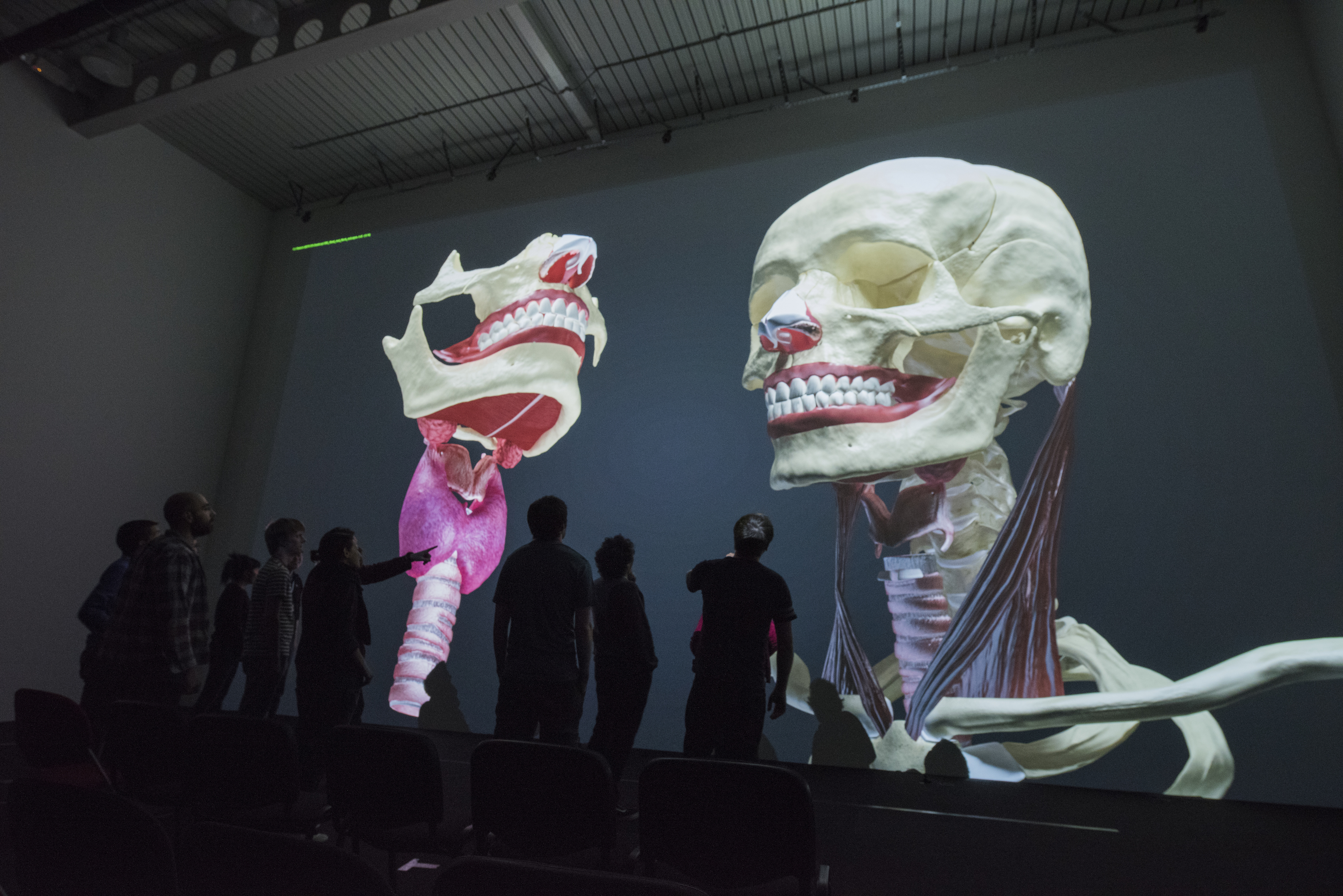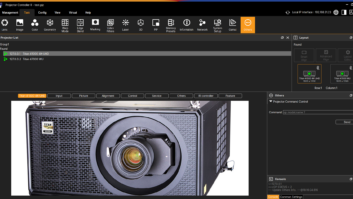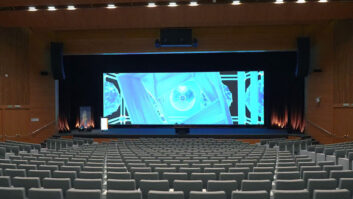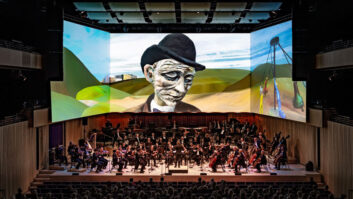
Digital Projection’s INSIGHT Laser 4K projector has been chosen to upgrade Glasgow’s Simulation and Visualisation (SimVis) centre, installed by Antycip Simulation.
Based in Glasgow’s Digital Media Quarter, SimVis is part of the Glasgow School of Art and operates across three main areas: research such as cutting-edge medical and heritage visualisation, commercial projects and academic research from a number of postgraduate degree programmes. Though each area is self-funding, large amounts of the commercial and medical research seeps into the academic arm so students are continually exposed to a broad range of projects from virtual reality computer games to heritage visualisation.
Dr Paul Chapman, acting director of SimVis stated: “We’re all very passionate about computer graphics and virtual reality and that passion means that through the state-of-the-art work we do, we have become world leaders in this area. We love what we do and we do it very well and that leads to the high quality of projects we get. Good projection facilities are very important for our work.”
John Mould, commercial development manager for Antycip Simulation describes the criteria upon which the projection solution was based: “SimVis wanted a projector that provided higher brightness than the existing solution in place, native 4K resolution with 120Hz active stereo output capability.” The size of the projector was important so projectors requiring active heat extraction measures were ruled out. “Finally, we were looking for a projector that could also address optical requirements for the throw distance and image width for the SimVis’ 11.4 x 6.4 metre projection wall.
“Digital Projection was quick to market bringing a family of laser light source based products and the attributes of this model ticked the boxes of what we understood the customer required. Many of the market alternatives at the time did not feature the benefits of laser light sources and relied upon Xenon lamps, which whilst extremely bright do require more specialist attentions from a maintenance point of view and direct connection to three phase power combined with active heat extraction measures.”
The vast size of the projection wall presented difficulties. SimVis wanted to increase the quality and fidelity of the display while at the same time also increasing the intensity of the light to the display surface. They did not, however, want a multiple projector array with blending technologies to afford such a large image.
Mould explained: “Digital Projection’s INSIGHT Laser 4K not only offers the ideal native 4K resolution of 4096 x 2160 but delivers this whilst also offering more ‘green’ credentials, lower maintenance intervals and longevity of the light source which is rated to operate beyond 20,000 hours. The pixel size was dramatically reduced offering the possibility to support picture in picture capabilities with up to 4 x HD and ensuring fantastic colour reproduction for any applications featured.”
Antycip Simulation engineers carried out the single-phase installation in under a week. A custom projector mounting platform was assembled to elevate the INSIGHT Laser 4K projector. I-beams tracking across the theatre infrastructure prevented a ceiling mount. The engineers also attached the optics before finally addressing the geometry correction to the projection axis.
A Cyber Station image generator from Broadberry was also installed, featuring a flagship Nvidia graphics card to ensure the demanding 4K content could be realised and able to cope with current and future demands for both animated and real-time content. Visual content is fed directly to the projector via a single 15-metre Ophit fibre optic cable.
Completing the full solution, an array of over 20 Vicon spatial tracking cameras track dynamic entities, using the tracker software, and Volfoni RF-based VR glasses enable the 3D capabilities to be realised by the audience.
Mould commented: “The biggest challenge was the precise placement of the projector, its light path and what angle we needed to pitch the optics from the existing platform. In an ideal world, modifications to the building would have allowed us to project perfectly on axis to the display surface and avoid any slight digital corrections but technology exists to achieve results in the face of such architectural challenges and avoided costly and extensive building alterations.”
Chapman commented: “The new projector is much better than the previous one, not only much brighter but the resolution is much greater giving much more definition to and clarity in the image.”
“The RF glasses reduce the brightness of the image so now the image we see with the glasses on is much brighter than previously and we can get close to the wall without seeing all the pixels – the quality and resolution is much better – which offers benefits to all our arms of research.”
Picture: School of Simulation and Visualisation







